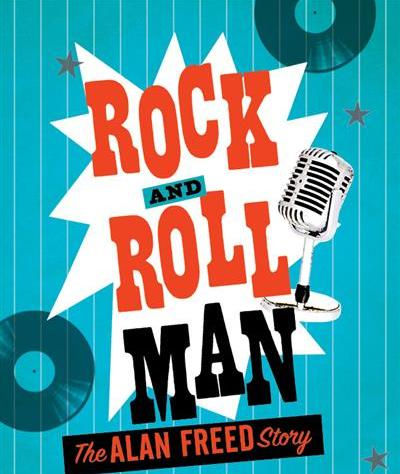ROCK AND ROLL MAN: THE ALAN FREED STORY – Berkshire Theatre Group
- DAN DWYER
- Jul 8, 2019
- 3 min read
Which is more apt to say about “Rock and Roll Man: The Alan Freed Story”? That it’s a musical that doesn’t know what kind of musical it is, or that it’s a work in progress? Well, both. The all-over-the-place book, credited to a trio of writers, begins with an engaging premise. Freed (Alan Campbell), the groundbreaking DJ and record promoter regarded as the “father of rock n’ roll”, disgraced by a Federal payola trial, flashbacks to his career and personal life, which occurs in the Court of Public Opinion, a fantasy trial where he’s defended by Little Richards (Richard Crandle) and prosecuted by J. Edgar Hoover (George Wendt). With more creative and focused writers the scenario has all kinds of imaginative possibilities, but the construct gets subsumed to a mélange of bio-musical, family melodrama, backstage showbiz story, jukebox musical and musical revue formulas.
The music score doesn’t help. The good news is that the show is chock-a-block full of over two dozen instantly recognizable rock ‘n roll classics from the 50s and early 60s. The bad news is that there are about ten instantly forgettable original songs which weigh the show down. The lifeblood of the show - the hits of Chuck Berry, Little Richard, Danny and The Juniors, Fats Domino, Buddy Holly, Jerry Lee Louis, LaVern Baker, and more - are performed by an immensely talented ensemble. But these hand-clapping numbers, many of which never get fully played out, are inserted without much context, so it’s like watching a cruise ship greatest hits revue or highlights from one of those PBS documentaries on a decade of pop music.
The most unexpected and least known of the Black R&B numbers is “Sixty Minute Man”, which Hoover describes as “raunchy” (today as naughty, perhaps), about the staying sexual power of a Black stud. Hoover and Little Richard's arguments in court introduce modern references to today’s culture wars; properly, the script makes plain it was racism that blocked Black R&B artists, the progenitors of rock n’ roll, onto radio stations which wouldn’t play “Negro” or “jungle music”. Freed broke that barrier. And credit “Rock And Roll Man” for acknowledging, too, how, once the barrier was broken, white artists then appropriated Black songs as their own. There’s an all-too-brief scene where Little Richard mockingly derides Pat Boone for his white-bread cover of “Ain’t That a Shame”. (The phenomenon was brilliantly musicalized in the “Cadillac Car” sequence in the original “Dreamgirls”.)
The most engaging character in the show is Little Richard; a wonderfully talented Richard Candle appears to be really having fun with his part. (I suspect he could have ripped the part wide-open if the show had more confident direction.) The guys who form the Quartet for all the Black R&B singing groups are terrific, as is powerhouse Valise Lekae (Broadway credits include “Motown” and “Book of Mormon” ) as LaVern Baker. Newcomer James Scheider has a knockout turn at the piano as a Jerry Lee Lewis performing “Great Balls of Fire”.
Alan Campbell, who played Joe Gillis to Glenn Close’s Norma Desmond in "Sunset Boulevard", does some heavy lifting with the script for all of the two and half hours. Kudos to him for making his character work - barely. George Wendt, who will always be known as Norm on “Cheers”, is burdened with the worst of the original songs, “King of Payola”. Both actors built careers around far superior material than what’s in “Rock And Roll Man”.



























Comments